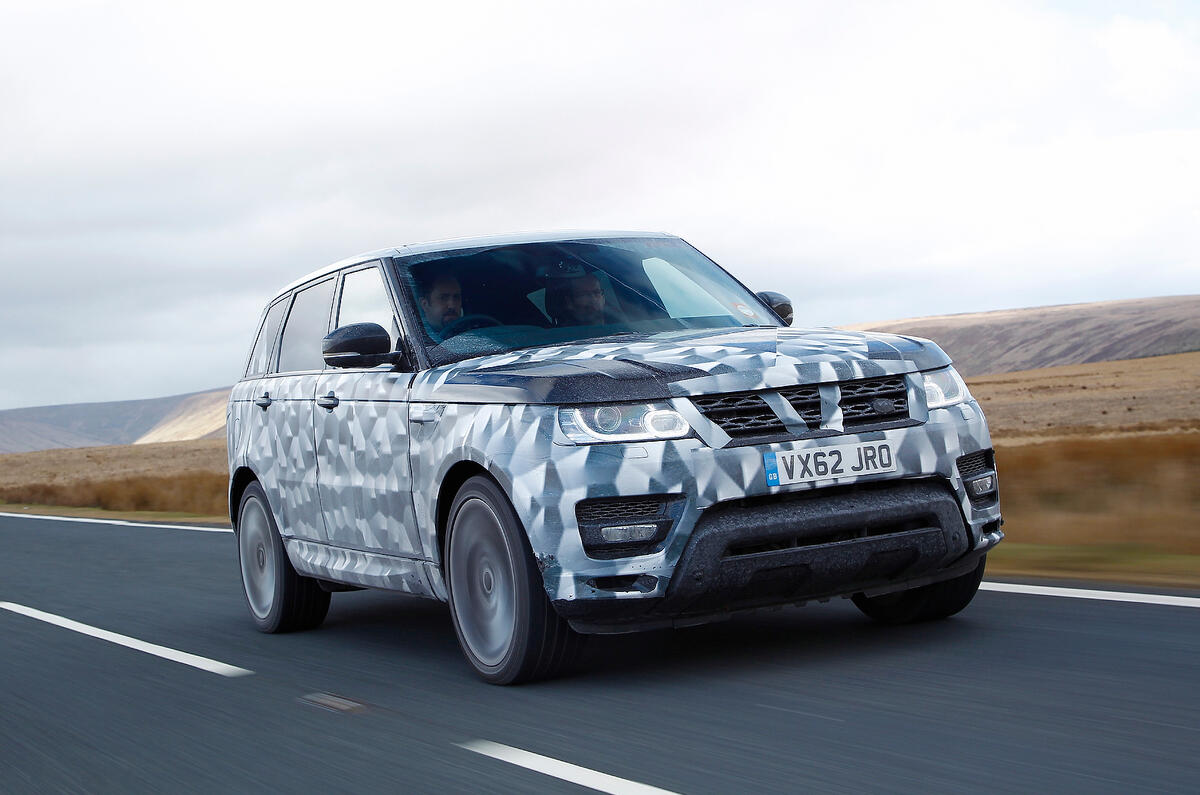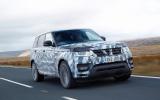Things I can’t tell you: what it’s like. Things I can tell you: what they’ve done, how they’ve done it, why they’ve done it and… holy moly… that they’re about to take a corner on a gravel road at a speed that I really don’t think is advisable in a Range Rover Sport and… oh, no, it’s okay – we haven’t crashed.
I’m at Walters Arena, not far from Swansea, south Wales. It used to be an open-cast mine but has now been repurposed as a home to 13 wind turbines, and several stages of Wales Rally GB, along with other motorsport events.
It has also become a third or fourth home to some Land Rover testers, who have supplemented their UK engineering facilities at Gaydon and Eastnor Castle with Walters’ fast, gravel-screed roads. It’s ideal for higher-speed off-road testing, as Land Rover’s off-road attributes manager, Jason Walters (no relation to the location), and vehicle engineering manager Craig Carter explain from the cabin of this fast-moving ‘L494’, or new Range Rover Sport to you and me, in whose passenger seat I’m sitting.
>> Steve Cropley talks to design boss Gerry McGovern
>> Range Rover Sport: full technical details
I still quite like the current Range Rover Sport, if I’m honest, but Carter and Walters, as you might expect, are keen to tell me what they’ve done to improve on it.
We’re sitting in an SDV6, the launch diesel model and the more powerful of the two 3.0-litre V6 oil-burners that will be offered, at 288bhp and 443lb ft. A 254bhp TDV6 will join it later, as will a 4.4 SDV8 (334bhp and 516lb ft). At launch there will also be a 5.0 Supercharged V8 petrol model with 503bhp and 461lb ft.
The UK market won’t get the supercharged 3.0 V6 available elsewhere, developed for additional off-road durability from the new Jaguar unit, but we will get a diesel hybrid and, later still, an in-line four-cylinder petrol.
Land Rover claims the new in-line four will bring the Range Rover Sport’s kerb weight down to less than 2000kg and prove more than 500kg lighter than a current V6 diesel.
But despite similarly grand claims about the new Range Rover’s lighter shell over its predecessor, we didn’t see such a big gap when it came to the scales. Why should it be different this time?
For a start, the new Sport is developed from the latest Range Rover’s aluminium architecture, which, in the Range Rover’s case, replaced a largely aluminium car anyway. When it comes to the Sport, this new platform replaces the one used by the current Sport and the Discovery, which features twin steel chassis rails like a separate ladder, on top of which is bolted a steel monocoque.





































































Join the debate
Add your comment
RANGE ROVER SPORT STRUCTURE AND WEIGHT.
Interesting article, Mr. Prior, but the previous Range Rover was certainly not 'a largely aluminium car'! It was unitary steel with just a few outer aluminium panels. The only 'largely aluminium' Land Rover hitherto was the Defender. And as far ANY Range Rover Sport weighing less than 2 tons, pull the other leg, though you do contradict yourselves on that matter a few paragraphs later. I am sorry to see Land Rover weight claims increasingly bordering on outright lies. For example the new Range Rover is less than 10% lighter than its predecessor and heavier than most steel competitors.
Neither did the separate perimeter frame chassis of the Discovery and the previous Sport necessarily add any weight. The Discovery is no heavier than the similarly sized previous Range Rover, which has a massive infrastructure including three large subframes and a ladder structure that is really a full-blown traditional Land Rover chassis, but not classified as such because it is welded onto the body rather than bolted.
Sporting SUVs - Preferred competition
The Range Rover line up is generally overpriced and under performing against its segment competition.
7 seats does nothing for the interior space for rear seat passengers.
Which of the following sporting SUVs would you choose.
0-60 is meaningless
Let's be serious here, the Brabus GLK V12 isn't even a production car at all but an after-market modifcation. The rest are former offroaders that are tuned to be race cars to a degree where they are no longer offroaders at all, losing their reason to exist. There is simply no point in a BMW X5 M that's a big heavy SUV trying to be a nimble Porsche 911: if speed is all you want, you are better off getting a car that's designed for speed in the first place, and if you want speed and a boot and 4 doors, get a Panamera or a Maserati Quattroporte.
The Audi Q7 V12 Tdi is even more idiotic since it's a diesel that's thirstier than 99% of petrol cars, so no point having a diesel in the first place. I could go on, but I think you get the gist of it: the RR Sport is actually the only car in this list that makes any sense at all. The others are ex-SUVs with an identity crisis trying to be Ferraris, pathetic really...get a Ferrari if 0-60 is all you care about. Btw, the Ferrari FF beats the Brabus GLK V12 by a mile and it has 4-wheel drive and a boot to speak of, makes the Brabus GLK look rather silly doesn't it?
At least this new platform
At least this new platform has enabled them to get rid of that awful blacked out section at the bottom of the windscreen....